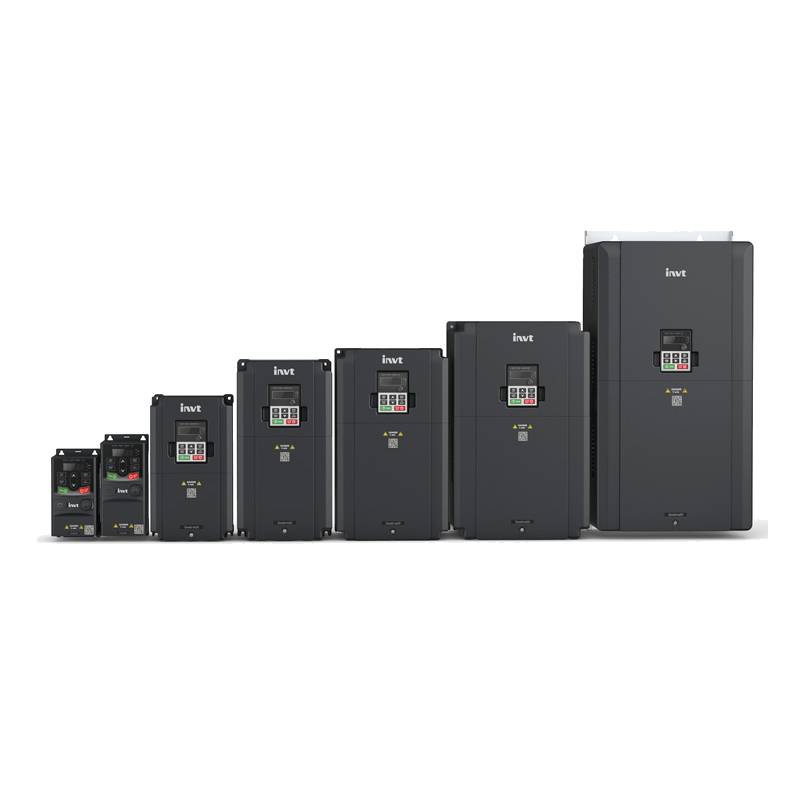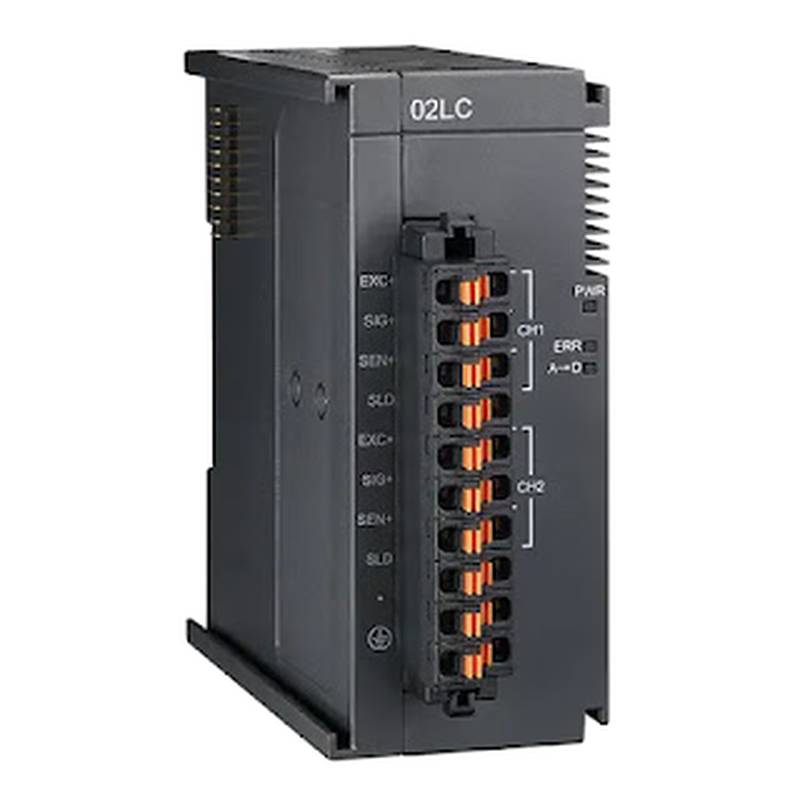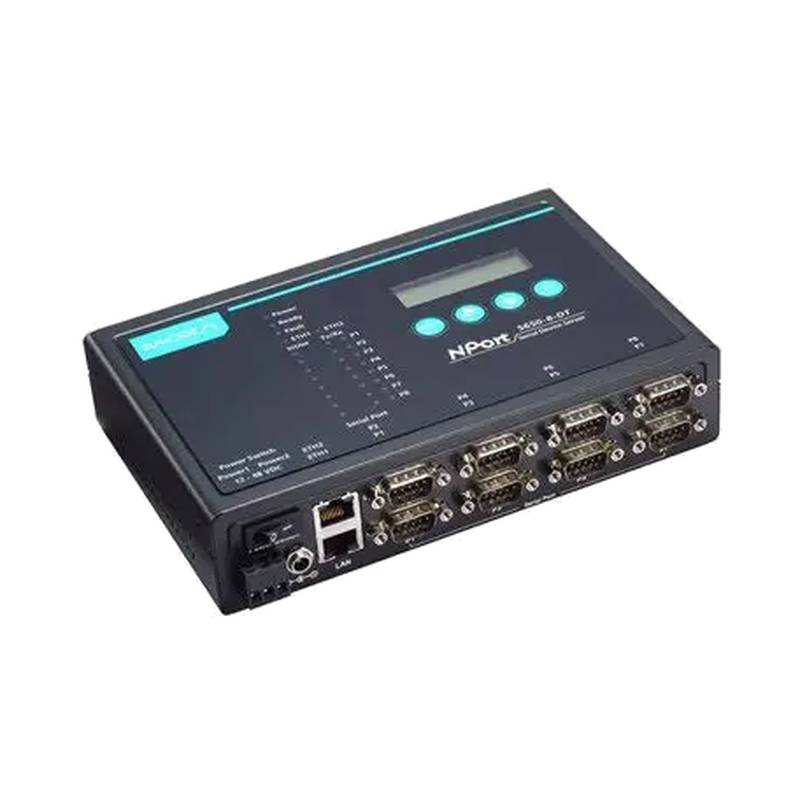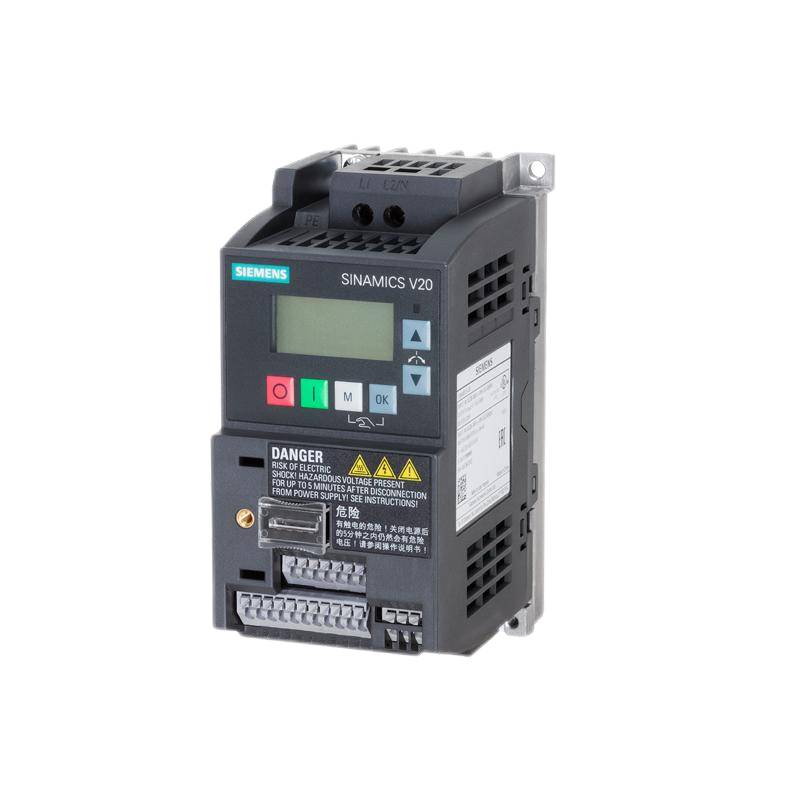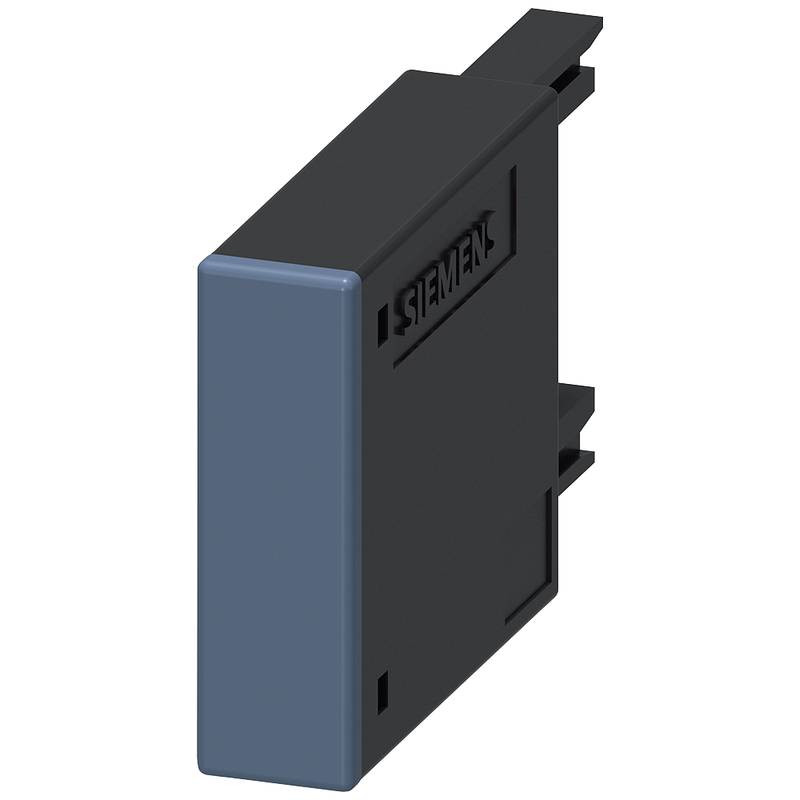
The INVT GD20-1R5G-S2 Variable Frequency Drive (VFD) is engineered for precise control and robust performance in small automation equipment. Delivering a compact yet powerful solution, this VFD boasts a 1.5kW (2HP) power rating, 220V single-phase input to three-phase output capability, and an IP20 enclosure for reliable operation. Its advanced features, including V/f control, sensorless vector control, and multiple programmable digital and analog I/O, establish it as a leading choice for demanding industrial applications requiring exceptional motor speed regulation and energy efficiency.
Product Specifications
| Parameter | Specification |
| :------------------- | :----------------------------------------------- |
| Model | INVT GD20-1R5G-S2 |
| Rated Power | 1.5 kW (2 HP) |
| Input Voltage | 220V Single-Phase |
| Output Voltage | Three-Phase (configurable) |
| Output Frequency | 0-300 Hz (configurable) |
| Enclosure Rating | IP20 |
| Control Method | V/f Control, Sensorless Vector Control |
| Communication | RS-485 (Modbus) |
| Digital Inputs | 4 programmable |
| Analog Inputs | 2 (0-10V, 4-20mA) |
| Analog Outputs | 1 (0-10V, 4-20mA) |
| Protection Features | Overcurrent, Overvoltage, Undervoltage, Overtemperature, etc. |
Core Features & Market Positioning
The INVT GD20-1R5G-S2 distinguishes itself through its sophisticated control algorithms, offering both V/f control for simpler applications and advanced sensorless vector control for enhanced torque precision and dynamic response. This dual-mode capability significantly broadens its applicability, allowing users to optimize performance based on specific motor requirements and load dynamics. Its robust design and comprehensive protection features position it as a reliable and cost-effective solution for small to medium-sized automation tasks, outperforming many competitors in its class with its combination of performance, flexibility, and durability. The integration of RS-485 communication further streamlines integration into larger control systems.
Key Application Scenarios
This VFD is ideally suited for a wide array of small automation equipment where precise speed and torque control are paramount. Common applications include conveyor systems, pumps, fans, small machine tools, packaging machinery, and textile equipment. Its ability to handle single-phase input is a significant advantage for installations where three-phase power is not readily available, making it a versatile choice for retrofitting older systems or for use in smaller workshops and facilities. The GD20-1R5G-S2 ensures smooth acceleration and deceleration, reducing mechanical stress on connected equipment and extending operational lifespan.
Practical System Integration Guidance
Integrating the INVT GD20-1R5G-S2 into an automation system is straightforward. For wiring, connect the single-phase 220V AC power supply to the L and N terminals. The three-phase motor is connected to the U, V, and W terminals. Ensure proper grounding for safety and noise reduction. Digital inputs can be configured for start/stop commands, forward/reverse operations, or multi-speed selection, while analog inputs allow for external speed referencing via potentiometers or PLC analog outputs. The RS-485 port facilitates communication with PLCs or SCADA systems using the Modbus protocol, enabling remote monitoring and control. Basic parameter setup typically involves configuring motor data (rated voltage, current, frequency, poles) and desired control modes.
Operation and Risk Mitigation
Safe operation of the INVT GD20-1R5G-S2 requires adherence to electrical safety standards and proper installation practices. Always disconnect power before performing any wiring or maintenance. The VFD is equipped with numerous protection functions, including overcurrent (OC), overvoltage (OV), undervoltage (UV), and motor thermal overload (OL). Common troubleshooting involves checking parameter settings, ensuring correct motor data is entered, and verifying input/output wiring integrity. For instance, an "OC" fault may indicate an overloaded motor or an incorrect acceleration time setting, requiring adjustment of the acceleration ramp or investigation into the mechanical load. Always refer to the user manual for detailed fault code explanations and resolution steps.
Scalability & Long-Term Value
While the GD20-1R5G-S2 is designed for smaller automation equipment, its modular design and communication capabilities offer significant long-term value. Its compatibility with the Modbus RTU protocol allows seamless integration into larger industrial networks, paving the way for more complex automation architectures and IIoT deployments. This enables centralized control, data logging, and predictive maintenance strategies. The availability of firmware updates from INVT also ensures that the drive can benefit from performance enhancements and new features over its lifecycle, maximizing return on investment and future-proofing automation investments.
FAQs
1. What is the maximum motor power for the INVT GD20-1R5G-S2 VFD?
The INVT GD20-1R5G-S2 is rated for 1.5 kW, which equates to approximately 2 horsepower. This power capacity is suitable for a wide range of small automation equipment.
This VFD is designed for applications where precise motor speed control is essential. It can handle typical loads found in conveyors, pumps, and fans within its power rating.
When selecting a VFD, always consider the motor's full load current and starting torque requirements in addition to its horsepower rating.
2. Can the INVT GD20-1R5G-S2 VFD accept single-phase input power?
Yes, a key advantage of the GD20-1R5G-S2 is its ability to operate from a standard 220V single-phase power supply. It then outputs a three-phase waveform to the motor.
This feature makes it an excellent choice for installations or machines where only single-phase power is available. It simplifies installation in many commercial and light industrial settings.
Ensure the single-phase input is stable and within the drive's voltage tolerance range for optimal performance and longevity.
3. What types of motor control does the INVT GD20-1R5G-S2 support?
The GD20-1R5G-S2 supports both V/f (Volts per Hertz) control and sensorless vector control. V/f control is simpler and effective for many applications.
Sensorless vector control provides significantly improved torque response and accuracy, especially at low speeds, without needing a motor encoder. This is ideal for demanding applications.
Choosing the right control mode depends on the motor type and the specific requirements of the application for speed regulation and torque performance.
4. What is the IP rating of the INVT GD20-1R5G-S2, and what does it mean for installation?
The INVT GD20-1R5G-S2 has an IP20 enclosure rating. This means it is protected against solid objects greater than 12.5 mm in diameter and has no protection against water ingress.
An IP20 rating indicates that the drive should be installed in a clean, dry environment, free from dust, moisture, or corrosive elements. It is not suitable for direct exposure to the elements.
Proper ventilation is crucial for IP20 drives to prevent overheating. Ensure adequate airflow around the unit and consider mounting it within a control panel for added protection.
5. Does the INVT GD20-1R5G-S2 VFD have communication capabilities?
Yes, the GD20-1R5G-S2 is equipped with an RS-485 communication port. This port supports the Modbus RTU protocol, a widely used standard in industrial automation.
This communication capability allows the VFD to be integrated into larger control systems, such as PLCs or SCADA systems. It enables remote monitoring and control of the drive's parameters and status.
Users can leverage Modbus to read motor speed, status information, and diagnostic codes, as well as to write parameters for automated process adjustments.
6. How do I connect a motor to the INVT GD20-1R5G-S2 VFD?
Connect the three output terminals of the VFD, labeled U, V, and W, directly to the corresponding terminals of your three-phase motor. Ensure proper wire gauge and insulation.
Always verify motor rotation direction after initial startup. If the motor runs in the reverse direction, you can typically swap any two of the U, V, or W motor connections at the VFD or motor terminal box.
Properly grounding both the VFD and the motor is essential for electrical safety and to minimize electromagnetic interference (EMI).
7. What are some common fault codes for the INVT GD20-1R5G-S2 and how can I address them?
A common fault is "OC" (Overcurrent), which can indicate a motor overload, rapid acceleration settings, or a short circuit. Adjust acceleration time or investigate mechanical load issues.
Another frequent code is "OL" (Overload), usually related to the motor's thermal protection. Ensure the motor's rated current is correctly programmed in the VFD and that the motor is not consistently running at its thermal limit.
"UV" (Undervoltage) or "OV" (Overvoltage) faults signal issues with the incoming power supply. Check the stability and voltage level of your single-phase input power.
8. Can the INVT GD20-1R5G-S2 VFD be used with a brake resistor?
While the GD20-1R5G-S2 is designed for general-purpose applications, it may not have built-in dynamic braking resistor terminals for high-dissipation applications. Check the specific model documentation.
For applications requiring significant braking torque or frequent stopping/reversing, external braking solutions might be necessary. This could involve separate braking units or specialized VFDs.
Always consult the INVT documentation or a technical expert to determine the suitability and correct configuration for braking resistor usage with this VFD model.
9. What is the operating temperature range for the INVT GD20-1R5G-S2 VFD?
The typical operating ambient temperature range for the INVT GD20-1R5G-S2 VFD is between -10°C and +40°C (14°F to 104°F). Operation outside this range can affect performance and lifespan.
Derating may be required for operation at the higher end of the temperature range, especially if installed in a confined space without adequate cooling. Consult the manual for derating curves.
Ensure the VFD is installed in an environment where the temperature can be maintained within its specified limits to guarantee reliable operation.
10. How can I program the INVT GD20-1R5G-S2 for a specific application?
Basic programming involves setting motor parameters (voltage, current, frequency, poles) and selecting the desired control mode (V/f or sensorless vector). Access these via the keypad.
For advanced control, configure digital/analog inputs for speed commands, start/stop signals, and feedback. Utilize the RS-485 port for Modbus communication to integrate with PLCs for complex sequencing.
Always refer to the comprehensive INVT GD20 user manual for detailed parameter descriptions, programming sequences, and example configurations tailored to various automation tasks.














